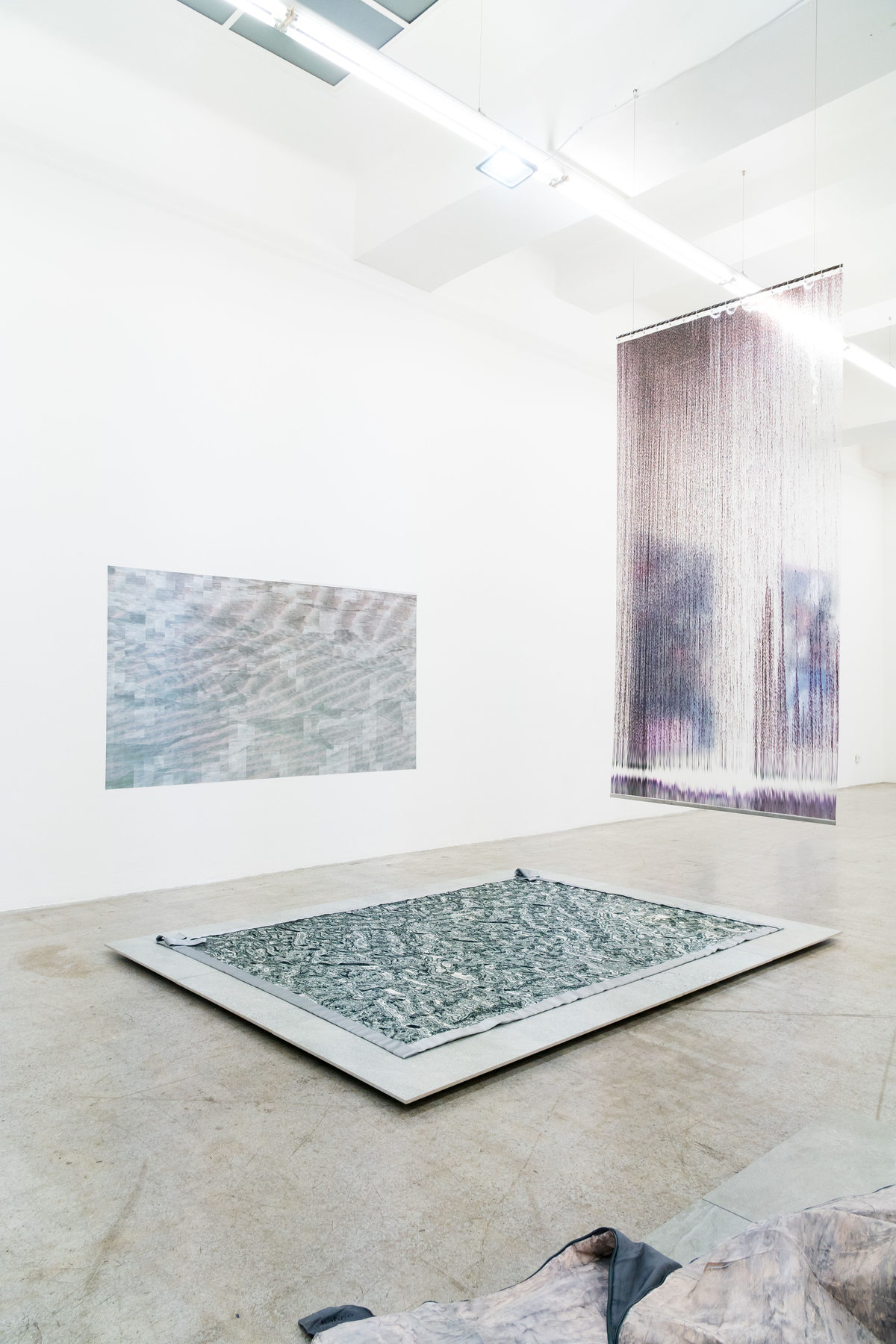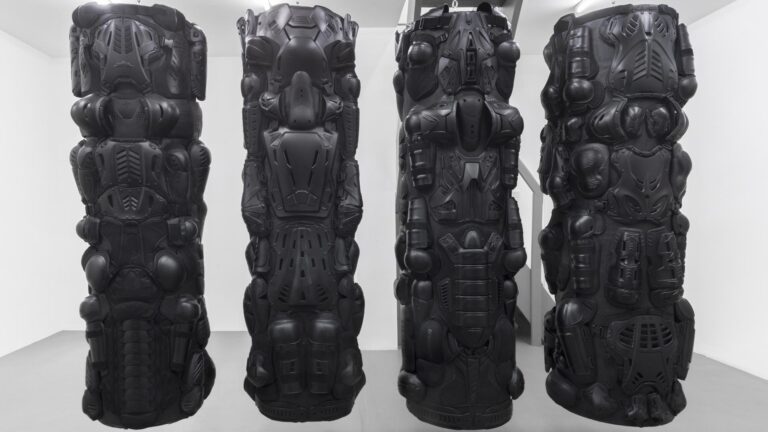Artists: LaTurbo Avedon, Delia Jürgens, Jennifer Mehigan, Adam de Neige
Exhibition title: Cyber Corporeality
Curated by: Sabrina Steinek
Venue: SCAG Contemporary, Vienna, Austria
Date: September 8 – October 14, 2017
Photography: all images copyright and courtesy of the artists and SCAG Contemporary, Vienna
Rapid advances in information and communication technology are revolutionizing our everyday life. Objective reality and the virtual world continue to merge into one another, blurring the thin line that divides them. And that’s just a brief snapshot of the complex reality in which we live. Technology is developing rapidly, faster than we thought. And this speed is what makes it so challenging for us humans and our corporeal limitations. It seems as though humanity has reached the peak of evolution, and the only way to upgrade is by the means of technology. It’s already happening – avatars, cyborgs, virtual and augmented reality technologies and AI are being incorporated in our everyday life.
The question curator Sabrina Steinek wants to pose with Cyber Corporeality, is on the meaning of corporeality in the 21st century. How do artists reflect new digital identities and bodies? How can we read and define bodies in analogue and digital spaces? And how does that influence the art?
Are avatars actually real? And does reality always have to be bound to physical bodies and humanity? In this self-era we’re living in, we’re creating new identities and avatars every day: the selectively curated photos on our Instagram-Feed, our beautiful lives meticulously represented in our Stories or perfected Tinder profiles. With the three-channel installation ID, LaTurbo Avedon wants to reflect on the ways that identity and virtual space have been transformed in recent years. The formerly secluded corners of the World Wide Web are hardly remote any longer as network behavior becomes a constantly measured and authenticated experience. When our faces, histories and preferences all become patterns recognized and evaluated by our networks, what amount of this data of the self belongs to user, and what ends up within the possession of our corporate facilitators? Since 2008, the artist LaTurbo Avedon has been in existence exclusively on the Internet as an avatar. A bodiless collection of algorithms, characteristics and appearances make up the artist’s visible identity. Although LaTurbo Avedon circumvents an identity controlled from the outside, the artist is enjoying liberties inside the art market. The female avatar teaches internationally and has been exhibited in places such as the Whitney Museum, New York and. Even though in ‘Second Life’, one doesn’t need to choose a human form (being a stone or a plant is possible as well), LaTurbo still presents herself as a white woman. She suggests that viewers are not yet ready for anything else: “People still need to identify with something familiar when they step inside of a new world. Maybe people aren’t quite ready to think about themselves after bodies, and how that might change their perceptions of things.”
While LaTurbo Avedon deals with the creation of new identities, Adam De Neige is interested in the limitations of the human body. How do we manage to filter the millions of photos that get uploaded to the Internet everyday? The answer is simple: we can’t because our brains aren’t made for it. But when the human body reaches its limits, technology takes over. De Neige has outsourced the task of filtering information and visuals. He wrote an algorithm, which after entering specific keywords presents him pictures out of the World Wide Web. The algorithm is going further though, it chooses view frames from the found materials and organizes these as new pictures. These found images then get translated from the digital to the analogue – De Neige paints guided by the algorithms. His work shows how the Internet and new technologies have already changed art production and the perception of paintings. For his sound installation, he worked with an Artificial Neural Network, which was filled with massive amounts of data containing topics like drama, emotion and love. Up to this day, it’s not fully clear how Deep Learning works and which parts of the information are acquired and how exactly this information is then analyzed. The Artificial Intelligence used in De Neige’s sound installation generates lines of text independently and spells them out for the listeners.
In contrast to the almost perfect Posthuman Bodies with which Silicon Valley regularly confronts us, stand the works of Jennifer Mehigan, who has worked intensively with avatars in the past. In her most recent series of work – produced for Cyber Corporeality – she deals with virtual mythologies. Merging classical tropes with new virtual mythologies, the series examines Mehigan’s relationship with hunger and the act of feeding, monstrosity, flesh – both animal and human – and notions of maternity, birth and their reverse (as often seen in online Vore communities, called‚ unbirthing‘). Jennifer Mehigan views her works as an expansion on the traditions of Jan Weenix’ (1642-1719) hanging creatures and vanities scenes. Combinations of multiple narratives and symbols negotiate the queer and precariousness of femininity, specifically focusing on its clichéd relationships with consumption, production, and desire.
Going from digital to analogue is also of interest for Delia Jürgens, who uses Stock Images as a base for her works. The materials she uses are characterized by a strong discrepancy: emotionally charged pictures meet complete anonymity. Jürgens neutralizes, discharges and deconstructs the images. She zooms in and out, plays with close-up and far-out effects, thereby creating picturesque moments. Her motives – water, deserts, clouds and waterfalls – are characterized by the absence of humanity, although the materials and the production process are strongly referring to mankind and act as a reflection of human life. Delia Jürgens is interested in the entities of the 4th industrial revolution and she plays with the friction her objects embody. Her materializations are subject to an exciting, constantly changing perception process. In addition to the thematisation of interfaces to identity, Jürgens is also interested in how information is stored. Her cement files and motifs of minerals are references to forms of information storage outside of how we know information to be stored today digitally. Far below the sea level, information is stored in the form of crystallizations. Jürgens thus grabs digital moments and transfers them into the physical realm.






















